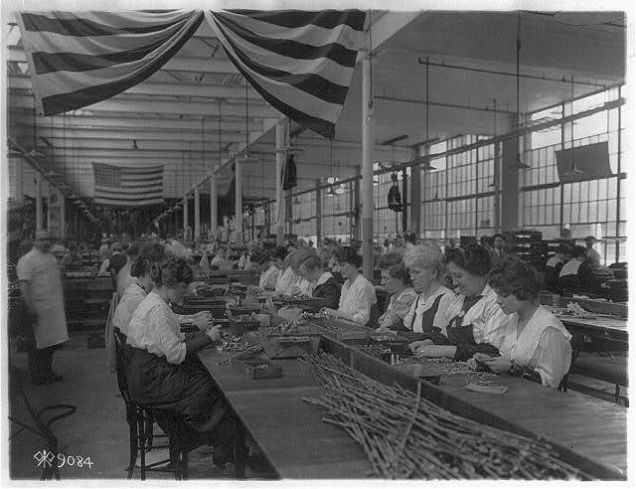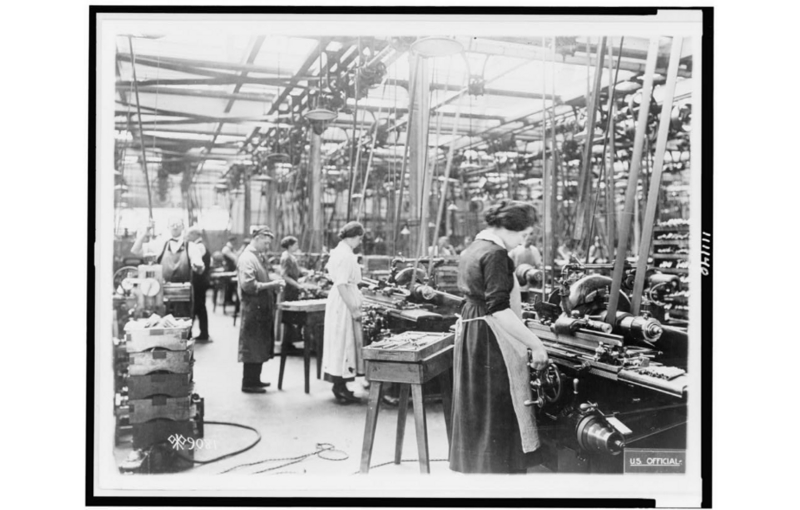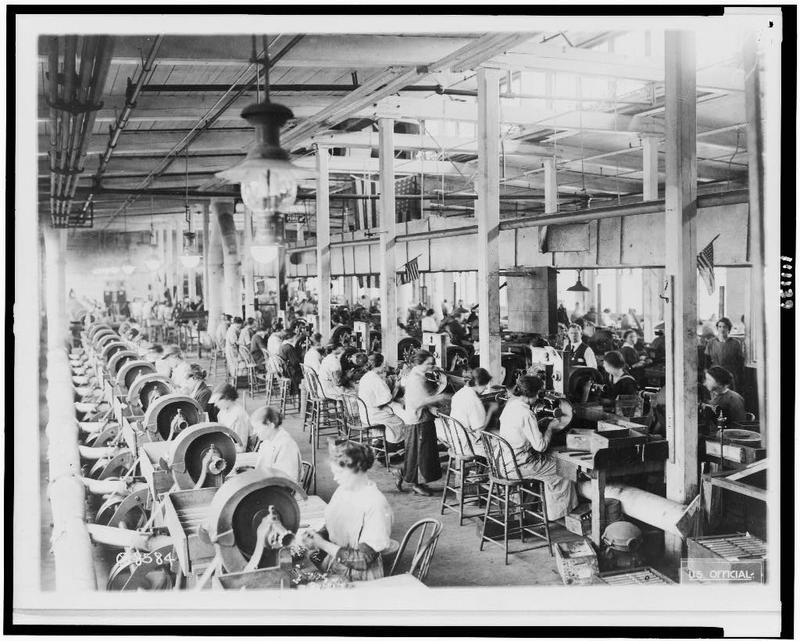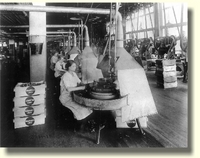3.) Women Work in Connecticut Firearm Factories
During both World War I and World War II, women were called upon to serve in factories on the homefront, producing weapons and ammunition for the United States armed forces. In nearly all photographs of Colt Firearm Manufacturing's assembly lines during World War I, it is mostly women shown contributing to the production of both Colt M1911 Pistols and the Colt Vickers machine gun.
In "Silk and Steel: Women at Arms," Robert Wilson explains this culture shift, saying "During World Wars I and II, women played a critical role in the manufacture of both ammunition and heavy ordinance. Today, virtually every gun factory in the world relies heavily on women in production jobs, as well as, increasingly, in management positions" (Wilson). In this photograph, every single worker sitting on the assembly line is female, while two men can be seen standing (one left, one upper-right) in what appears to be management/supervision roles.
It was not only at Colt in Hartford that women were given opportunities to work and assist the war effort, however, as many women also helped the armories in Bridgeport, Connecticut for Remington Arms, brass in Waterbury at Waterbury Brass, and the navy in New London, CT.
Pictured here are female workers on a Colt factory line producing weapons during the Great War era. Due to the length, weight, and shape of the material they are working with, it appears they are manufacturing barrels for the Colt Vickers machine gun. The time frame for which the picture is placed would also indicate the Vickers as the likely weapon pictured.
In order to meet the demand of such large government orders Colt had to drastically increase their workforce, which subsequently raised their overall payroll expenditures, and a rise in Hartford's industrial population. In Metal Industry which published in 1920, it is noted that "From 1914 to 1920, Hartford's industrial population grew from 20,066 to 30,000...The capital in Hartford industries wasnincreased from $53,791,000 in 1914 to $100,000,000 in 1919-1920, and the yearly factory payroll jumped from $14,662,000 to $45,000,000" (Metal Industry, 47).
According to the Small Arms Defense Journal, between 1915 and 1916, over four-thousand Vickers machine guns were ordered from Colt from international allies during the war. When the United States joined the fight in 1917, additional machine guns were sent to the front lines. Over seven-thousand were produced by wars ends, many being saved in reserve until World War II.
Pictured here is an inside look at the assembly lines inside Winchester Repeating Arms in New Haven during World War I. Though Winchester eventually supplied the United States military almost exclusively in 1917 and 1918, they initially supplied Britain and Russia, among others.
When the United States did enter the war in 1917 it was "woefully ill-equpped" , according to Laura Trevelyan in The Winchester: The Gun That Built and American Dynasty (Trevelyan 173). The United States army reached out to Winchester and by wars end, issued over 292 contracts for thousands of weapons (Library of Congress).
The high demand for Winchester weapons for the United States army created new job opportunities for Connecticut residents and an increase in the industrial workforce. According to a sales manager from Winchester as quoted by Trevelyan, "Ninety-eight percent of the wage and salary earners will be fully employed at the HIGHEST WAGES THEY HAVE EVER RECEIVED. Women will now rapidly enter gainful occupations formerly occupied by men." As seen in this photograph, this prediction came to fruition as many women entered the manufacturing workforce for Winchester.



